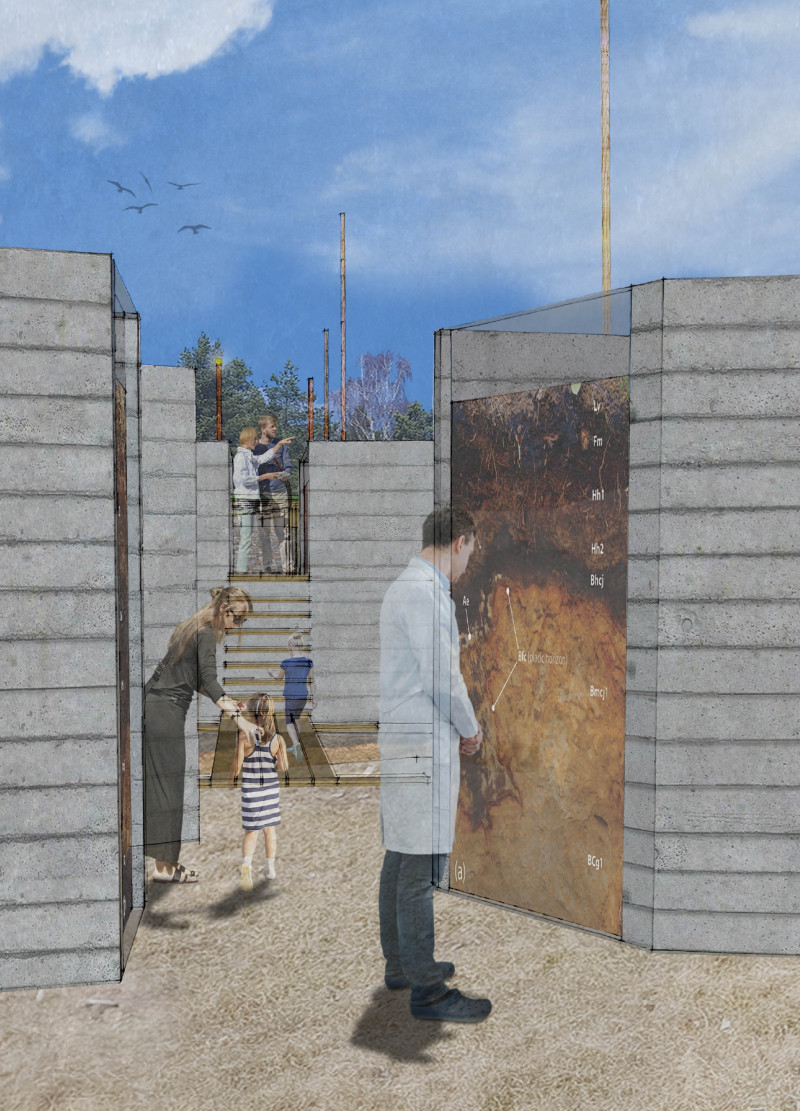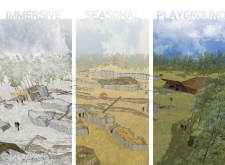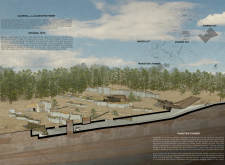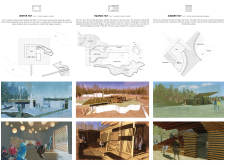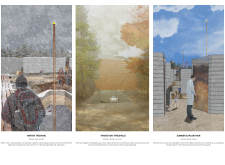5 key facts about this project
The Great Kemeri Bog Visitor Center is located in Latvia and offers visitors a chance to engage with the rich and varied ecosystem of the bog. The design focuses on creating a setting where the architecture interacts with the changing seasons. With the concept of an "Immersive Seasonal Playground," the center aims to provide a space that emphasizes the beauty and complexity of the natural landscape throughout the year.
Seasonal Huts
A key feature of the design is a series of seasonal huts placed within a central clearing in the woods. Each hut is specifically designed to respond to seasonal conditions. The Winter Hut, known as "Heart," provides warmth and shelter for visitors during the colder months. It acts as a refuge, allowing people to relax and enjoy the peaceful surroundings of the bog.
The Equinox Hut
Next is the Equinox Hut, also called "Mind." This hut highlights the connection between spring and autumn. It includes flexible design elements that can be adjusted by visitors, enhancing their experience based on the weather. By inviting people to interact with the space, the Equinox Hut fosters a deeper relationship with both the architecture and the natural environment.
The Summer Hut
The Summer Hut, referred to as "Hand," serves as a bridge from the clearing to the forest. Its open structure allows for air circulation while providing cover under a protective canopy. Designed for larger group activities, this hut offers clear views of the forest, encouraging visitors to appreciate the natural beauty around them.
Illuminated Clearing
The clearing plays a vital role in the overall design, acting as a connection between the woods and the expansive bog. Vertical structural elements emerge within the clearing, and some are tall with illuminated tops. These serve as visual markers, helping visitors navigate the area. The gentle interplay of light enhances the experience, drawing attention to the landscape's natural features.
To access the visitor center, individuals enter through a transition chamber. This space is thoughtfully designed to connect visitors with the site's natural soil and ecology. It prepares them for their journey into the bog, deepening their awareness of the landscape’s ecological richness and the experiences that await them.


